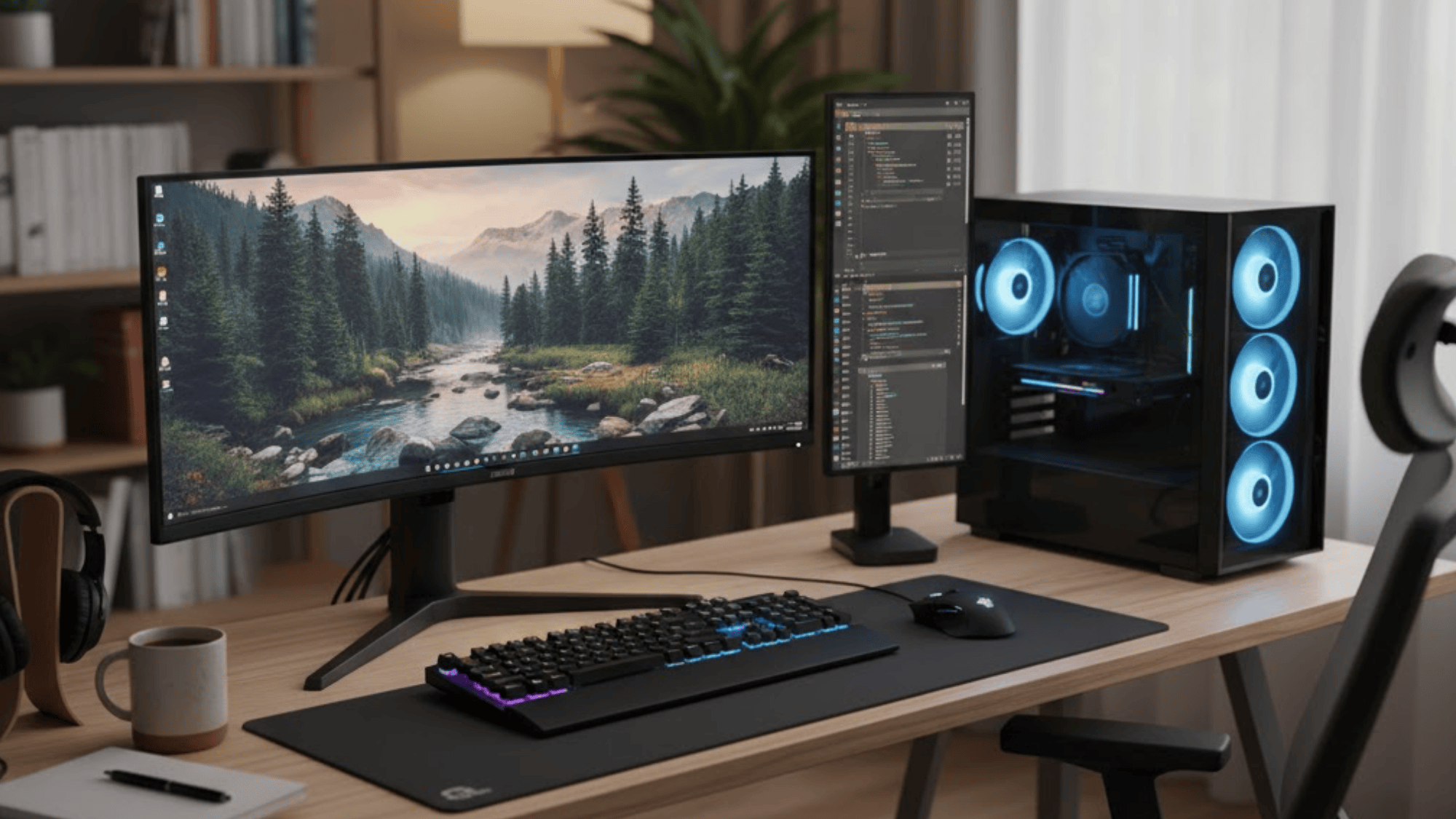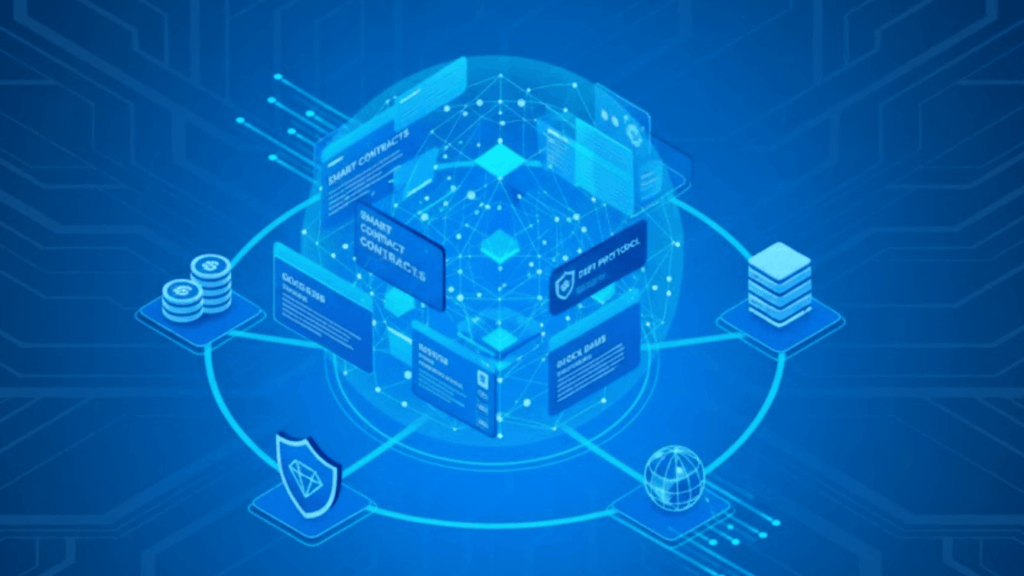If you’ve ever wondered what a node in blockchain is or heard people talk about nodes in crypto and felt a little lost, you’re not alone.
I used to find those terms confusing, too! In simple words, nodes are the computers that keep a blockchain running safely and fairly.
They check transactions, store data, and make sure everything on the network stays honest.
In this blog, I’ll walk you through what blockchain nodes really are, how they work, the different types, and why they’re so important for crypto and decentralization.
By the end, you’ll understand exactly how nodes help keep blockchains, and your favorite cryptocurrencies, alive and secure.
What Exactly is a Blockchain Node?
At its core, a node is any computer or device that connects to a blockchain network. It’s not just the hardware; it’s the combination of the device and the person or organization running it.
What is a node in crypto? It’s the same thing, but specifically for cryptocurrency networks like Bitcoin, Ethereum, or Cardano.
Every computer running Bitcoin software, for example, becomes a node helping keep Bitcoin honest and decentralized.
Here’s a helpful way to think about it: Nodes are like librarians who all keep the same book of records and update it together.
When someone makes a transaction, all the librarians check their books, verify the information, and then update their copies at the same time. No single librarian controls the truth; they all agree on it together.
The beauty of this system? No bank, government, or company sits in the middle controlling everything. The power is spread out across thousands of nodes worldwide.
How Blockchain Nodes Work

Understanding how nodes operate helps you see why blockchain technology is so revolutionary. Let’s break it down step by step.
1. Transaction Validation
When someone sends cryptocurrency, nodes spring into action immediately. They check several things:
- Does the sender actually own the coins? Nodes verify digital signatures to confirm ownership
- Has this money already been spent? This prevents “double-spending,” where someone tries to use the same coins twice
- Is the transaction formatted correctly? Every transaction must follow specific rules
Valid transactions get added to something called the “mempool”, basically a waiting room where transactions hang out before being added to the blockchain. Invalid transactions? They get rejected immediately.
2. Block Verification
Transactions don’t get added to the blockchain one by one. Instead, they’re grouped into “blocks” (think of them as pages in that record book). Here’s what happens:
A special type of node (more on different types later) creates a new block containing multiple transactions. Other nodes then verify this entire block by checking every transaction inside it.
If everything looks good, they add this block to their copy of the blockchain. All copies sync almost instantly across the network. Whether a node is in New York, Tokyo, or London, it all updates its records at virtually the same time.
3. Consensus Maintenance
How do thousands of nodes agree on what’s true? They use something called “consensus mechanisms.” Think of these as the rules everyone follows to stay in agreement.
- Proof-of-Work (PoW): Nodes (called miners) compete to solve complex math puzzles. The winner gets to add the next block and receives a reward. Bitcoin uses this method.
- Proof-of-Stake (PoS): Nodes (called validators) “stake” or lock up their own cryptocurrency as collateral. They’re chosen to validate blocks based on how much they’ve staked. Ethereum now uses this method.
Both systems ensure that honest behavior gets rewarded and cheating becomes incredibly expensive and difficult.
4. Data Storage and Accessibility
Different nodes store different amounts of data. Full nodes store the entire blockchain from the very first transaction ever made, which amounts to hundreds of gigabytes or even terabytes of data.
Light nodes only store partial data, like recent transaction headers.
This system creates complete transparency. Anyone can check any transaction ever made. Nothing stays hidden, which keeps everyone honest.
Why Blockchain Nodes Are Important
Nodes aren’t just technical details—they’re what make blockchain special. Here’s why they matter so much:
- Decentralization: No single authority controls the data. Banks can freeze your account, but blockchain nodes? They operate independently, with no CEO to answer to.
- Security: Nodes collectively prevent fraud and tampering. Want to hack the blockchain? You’d need to compromise thousands of nodes simultaneously—virtually impossible.
- Transparency: Every transaction is public and verifiable. Anyone can check the blockchain to see if a transaction happened. This level of openness prevents corruption.
- Network Stability: Even if some nodes fail or go offline, others keep the blockchain running. The network is incredibly resilient because it’s distributed across so many points.
Here’s a mind-blowing stat: The Bitcoin network has over 50,000 active nodes globally. That’s 50,000 independent computers working together to keep Bitcoin secure and running.
Types of Blockchain Nodes
Not all nodes do the same job. Different types serve different purposes, and understanding them helps you see how blockchain networks operate efficiently.
| Node Type | Main Role | Example Use Case |
|---|---|---|
| Full Node | Stores the entire blockchain and validates every transaction | Bitcoin, Ethereum |
| Light Node | Verifies using only block headers | Mobile crypto wallets |
| Mining Node | Adds new blocks via Proof-of-Work | Bitcoin miners |
| Validator Node | Stakes coins to confirm blocks | Ethereum, Cardano |
| Master Node | Handles governance or instant transactions | Dash, PIVX |
| Archival Node | Stores the complete blockchain history | Ethereum auditors |
| Lightning Node | Handles off-chain transactions | Bitcoin Lightning Network |
Let’s take a look at each node type carefully:
- Full Nodes: They are the workhorses of blockchain networks. They download and store the entire transaction history, making them the most trusted source of truth. If you’re running a business that accepts crypto, you’d want a full node.
- Light Nodes: Offer a compromise. They don’t store everything, just enough to verify transactions. Perfect for mobile wallets where storage space matters.
- Mining NodesandValidator Nodes: They are actually creating new blocks. Miners use computational power (and lots of electricity), while validators stake their own crypto as a guarantee of honest behavior.
- Master Nodes: They perform special functions like enabling private transactions or instant sends. They usually require holders to lock up a significant amount of cryptocurrency.
- Archival Nodes: Keep every bit of data from day one. Regular full nodes might “prune” or delete old data they no longer need, but archival nodes never do.
- Lightning Nodes: Used to handle transactions off the main blockchain for speed and lower fees, settling the final results back on the blockchain later.
Each type plays a necessary role in keeping blockchain networks functional, secure, and efficient.
How Nodes Work in Popular Cryptocurrencies
Let’s look at how real blockchains use nodes differently:
Bitcoin: Mining nodes compete to add new blocks using Proof-of-Work. They race to solve cryptographic puzzles, and the winner gets newly created Bitcoin plus transaction fees. This process occurs roughly every 10 minutes. While energy-intensive, it’s been secure for over 15 years.
Ethereum: After “The Merge” in 2022, Ethereum switched from mining to Proof-of-Stake. Now validator nodes stake at least 32 ETH to participate in block validation. This change reduced Ethereum’s energy consumption by over 99%.
Solana & Cardano: These newer blockchains focus on speed and scalability. They use validation methods supporting thousands of transactions per second and remaining eco-friendly. Their nodes work together using advanced consensus algorithms designed for efficiency.
Different blockchains prioritize different things. Bitcoin prioritizes security and decentralization above all. Ethereum balances security with programmability.
Solana and Cardano push for speed and low costs. But all of them depend completely on their networks of nodes.
Security and Risks of Blockchain Nodes
While blockchain is incredibly secure, nodes themselves can face threats. Understanding these risks helps keep networks safe.
DDoS Attacks: Bad actors might flood nodes with fake traffic, trying to overwhelm them and knock them offline. When enough nodes go down, the network slows or even stops temporarily.
Malware and Compromised Nodes: If someone installs malicious software on a node, they could try to spread false information or spy on network traffic. This is why node operators need strong security practices.
Centralization Risk: If one company or group controls too many nodes, they could potentially manipulate the network. Bitcoin mining saw a few pools control over 51% of network power, alarming for decentralization.
How to stay protected:
- Use firewalls and updated security software.
- Spread nodes across different providers and locations (diversification).
- Encrypt communications between nodes.
- Regularly update node software to patch vulnerabilities.
- Monitor your node for unusual activity.
The blockchain community takes these risks seriously. That’s why thousands of independent people and organizations run nodes; it’s not just about profit, it’s about keeping the network secure and decentralized.
How to Run a Node Yourself
Want to support your favorite blockchain? Running your own node is easier than you might think. Here’s a simplified roadmap:
Step 1: Choose a Blockchain

Pick which network you want to support, Bitcoin, Ethereum, and many others welcome node operators. Think about what matters most to you.
Do you want to support the original cryptocurrency (Bitcoin) or prefer networks with smart contracts (Ethereum)? Each blockchain has different requirements and purposes.
Research a few options before deciding. Your choice will determine the hardware needs and software you’ll use next.
Step 2: Get the Hardware

You’ll need a computer with decent specs to run a node effectively. For Bitcoin, a regular computer with 500GB+ of storage works fine. Ethereum requires more power and storage (think 2TB+ of space).
You’ll also need a stable internet connection since your node stays online constantly. Don’t worry, you don’t need an expensive gaming computer.
A mid-range desktop or even a dedicated device like a Raspberry Pi works for some blockchains.
Step 3: Download the Node Software

Each blockchain has official software available for free download. Bitcoin uses Bitcoin Core, Ethereum uses Geth or other clients, and so on.
Visit the official website of your chosen blockchain to download the legitimate software; never use third-party sources to avoid malware.
The installation process is usually straightforward, similar to installing any other program. Make sure you’re downloading from the correct official site. Once installed, you’ll configure some basic settings before starting.
Step 4: Sync the Blockchain

Your node will download the entire transaction history from the beginning of the blockchain.
This process is called “syncing” and takes time, anywhere from a few hours to several days, depending on the blockchain and your internet speed.
Bitcoin’s blockchain is over 500GB, while Ethereum’s is even larger. Your computer needs to stay on during this process. Be patient! Once synced, your node only downloads new blocks, which happens much faster.
Step 5: Secure Your Setup

Set up firewalls to protect your node from attacks and keep your software updated regularly. Consider using a VPN for extra privacy, especially if you’re concerned about exposing your IP address.
Change default passwords and enable two-factor authentication where available. Monitor your node’s performance and watch for unusual activity.
Security matters because a compromised node could spread false information or become vulnerable to hackers. Regular maintenance keeps your node running safely and efficiently.
Running your own node means you don’t have to trust anyone else. You can verify your own transactions directly.
At the End
I hope this guide helped you understand why nodes matter so much; they’re the heart of blockchain tech. Every time someone sends Bitcoin or uses Ethereum, nodes work behind the scenes to ensure it happens safely and fairly.
The coolest part? Anyone can run a node and help protect these networks. You don’t need to be a tech expert or have fancy equipment. By understanding nodes, you’re already ahead of most people in the crypto space.
Blockchain isn’t just about making money; it’s about building a fairer, more transparent financial system where everyone has equal access and nobody gets special treatment.
Ready to learn more? Read my other blockchain guides and start your path into the world of decentralized technology today!

